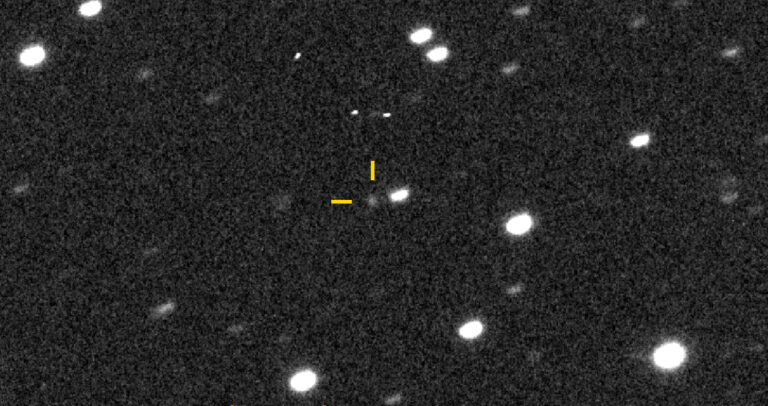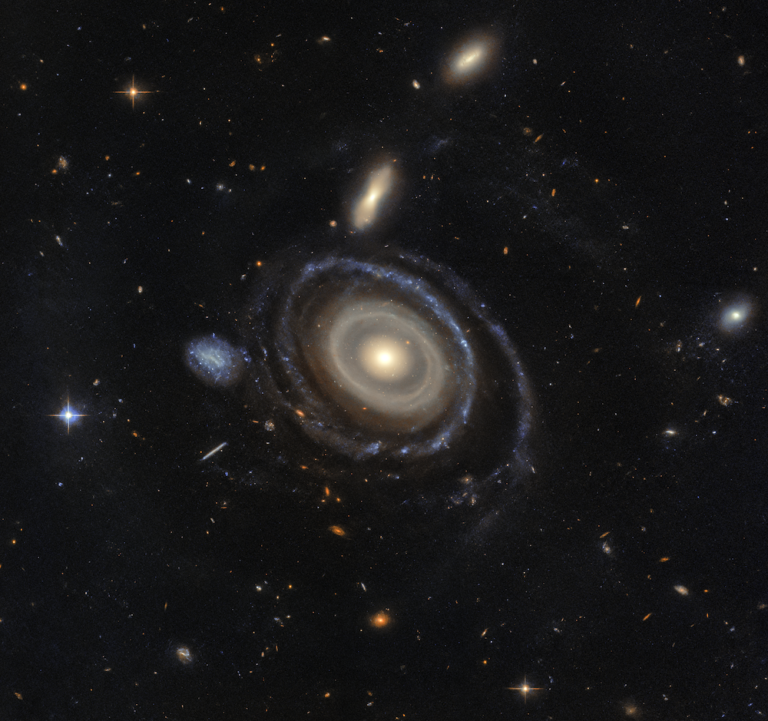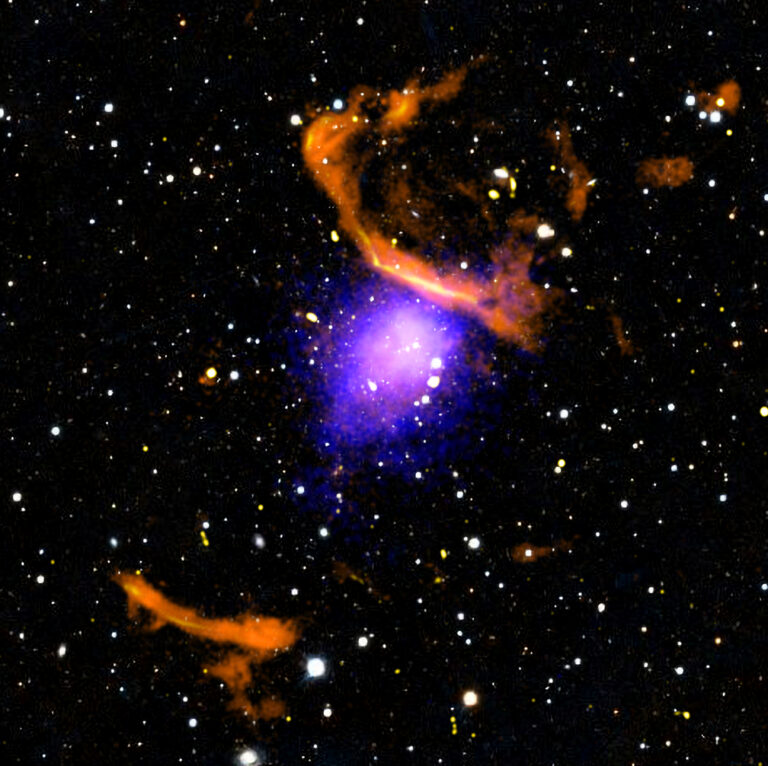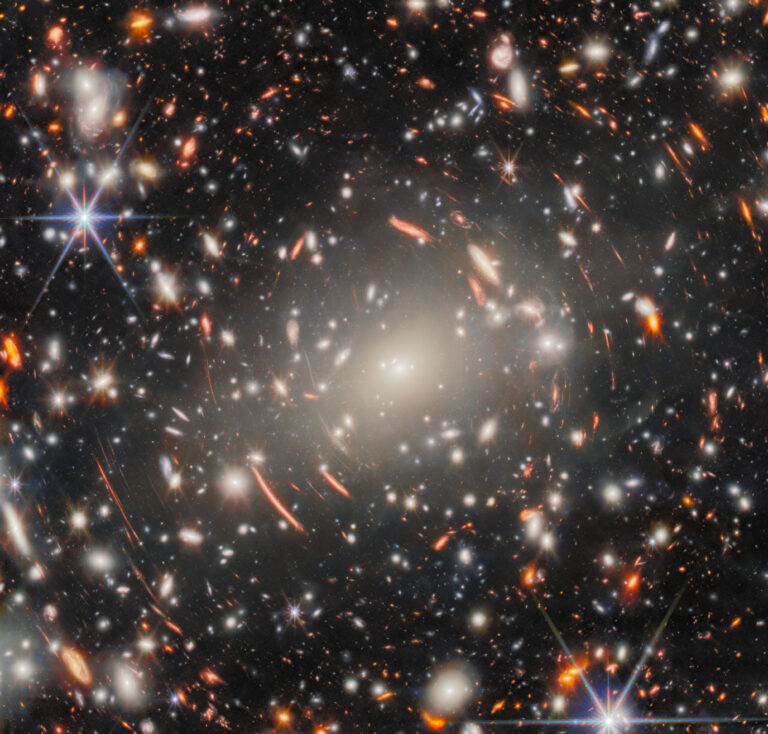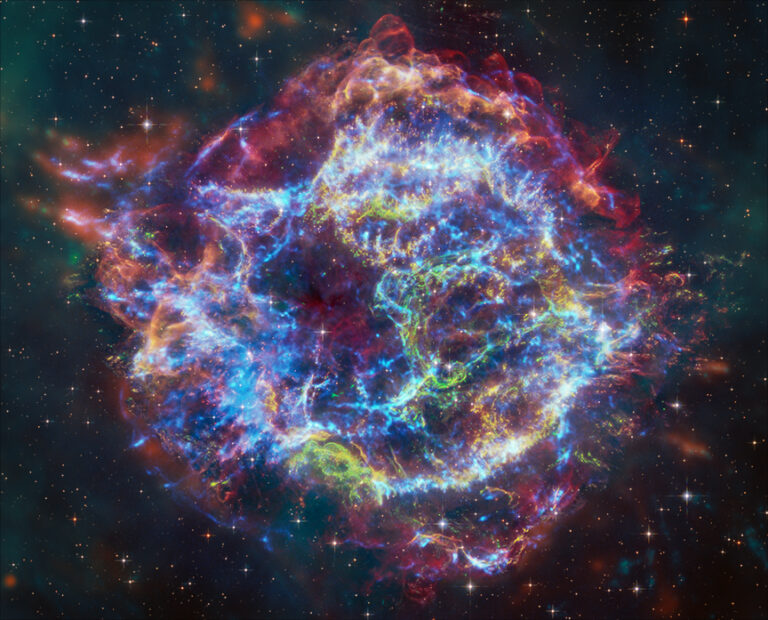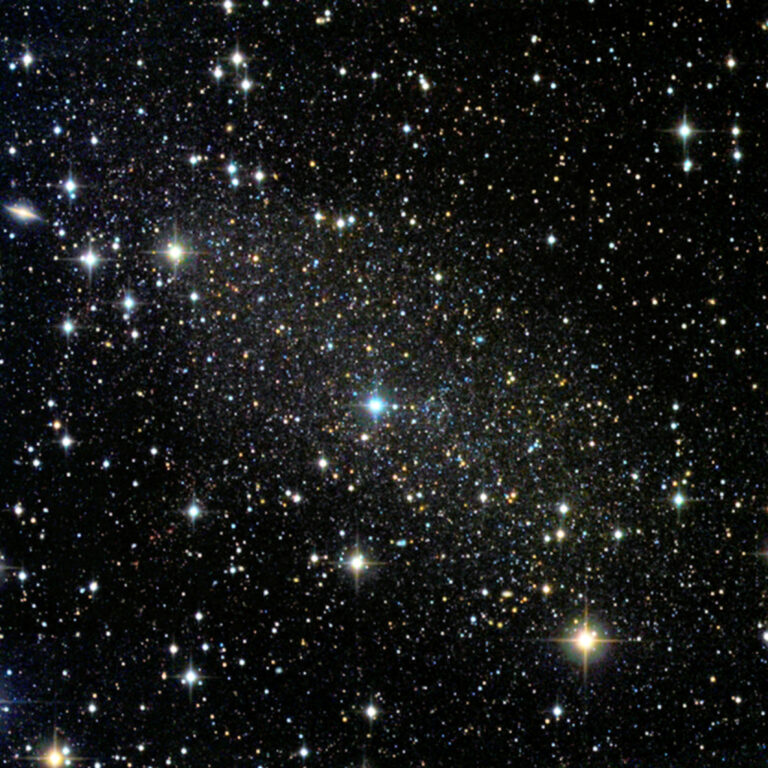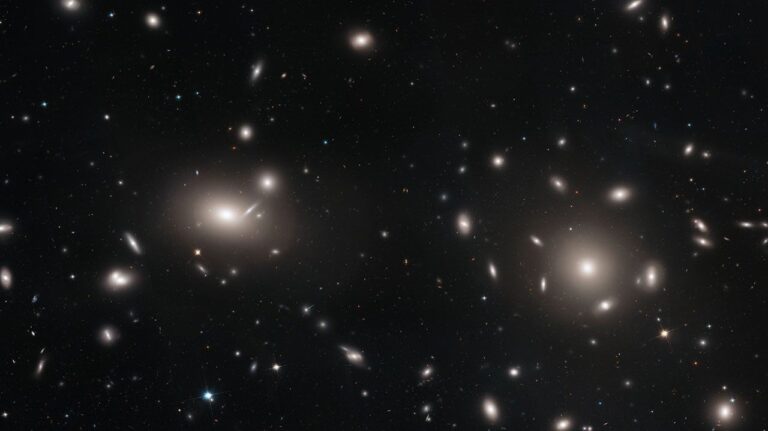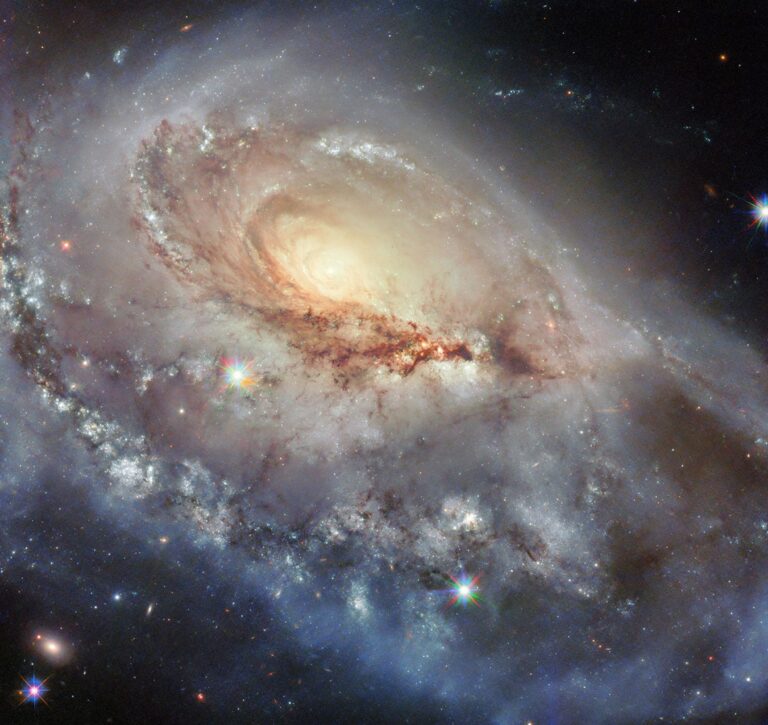
Key Takeaways:
- The SAGA Survey, a decade-long project, cataloged 101 Milky Way analogue galaxies and 378 of their satellite galaxies to determine the typicality of our galaxy's satellite population.
- The survey revealed that the Milky Way's satellite galaxies are atypical, exhibiting a higher proportion of quenched (star-formation ceased) dwarf galaxies compared to other Milky Way-like galaxies, most of which still actively form stars.
- The study's findings provide valuable data for refining simulations of galaxy formation and evolution, and for constraining models of dark matter by analyzing the distribution and characteristics of satellite galaxies.
- "We knew it was a little bit crazy… The idea was this would be a long, slow process but that it was so worth the challenge of doing it," said Marla Geha.
In the vast expanse of the universe, the Milky Way Galaxy holds a special place in our hearts. It is our home, and after studying it for decades from our cosmic residence nestled within one of its majestic spiral arms, we know it better than any other galaxy.
But how truly typical — or extraordinary — is the galaxy that cradles our existence? In other words, to what extent does it share its history with other galaxies scattered across the grand tapestry of the cosmos?
Placing the Milky Way’s uniqueness, or lack thereof, in a broader context is crucial because, for decades, scientists have used it as a model to understand how galaxies form and evolve. However, in a universe filled with more galaxies than we’ve ever been able to count, the Milky Way is just one example. What if we’ve been misled into thinking some of its traits are actually quirks, when, in reality, they might be typical of most galaxies?
Around 10 years ago, Marla Geha at Yale University and Risa Wechsler at Stanford University launched an ambitious effort to answer this question. Their approach involved looking not only at galaxies themselves, but also their entourages of dwarf galaxies — satellite galaxies that orbit their larger hosts. Because dwarf galaxies are smaller, they are more sensitive to their environment and can act as probes. Studying them can yield insights into their host galaxies’ invisible halos of dark matter and how they evolved.
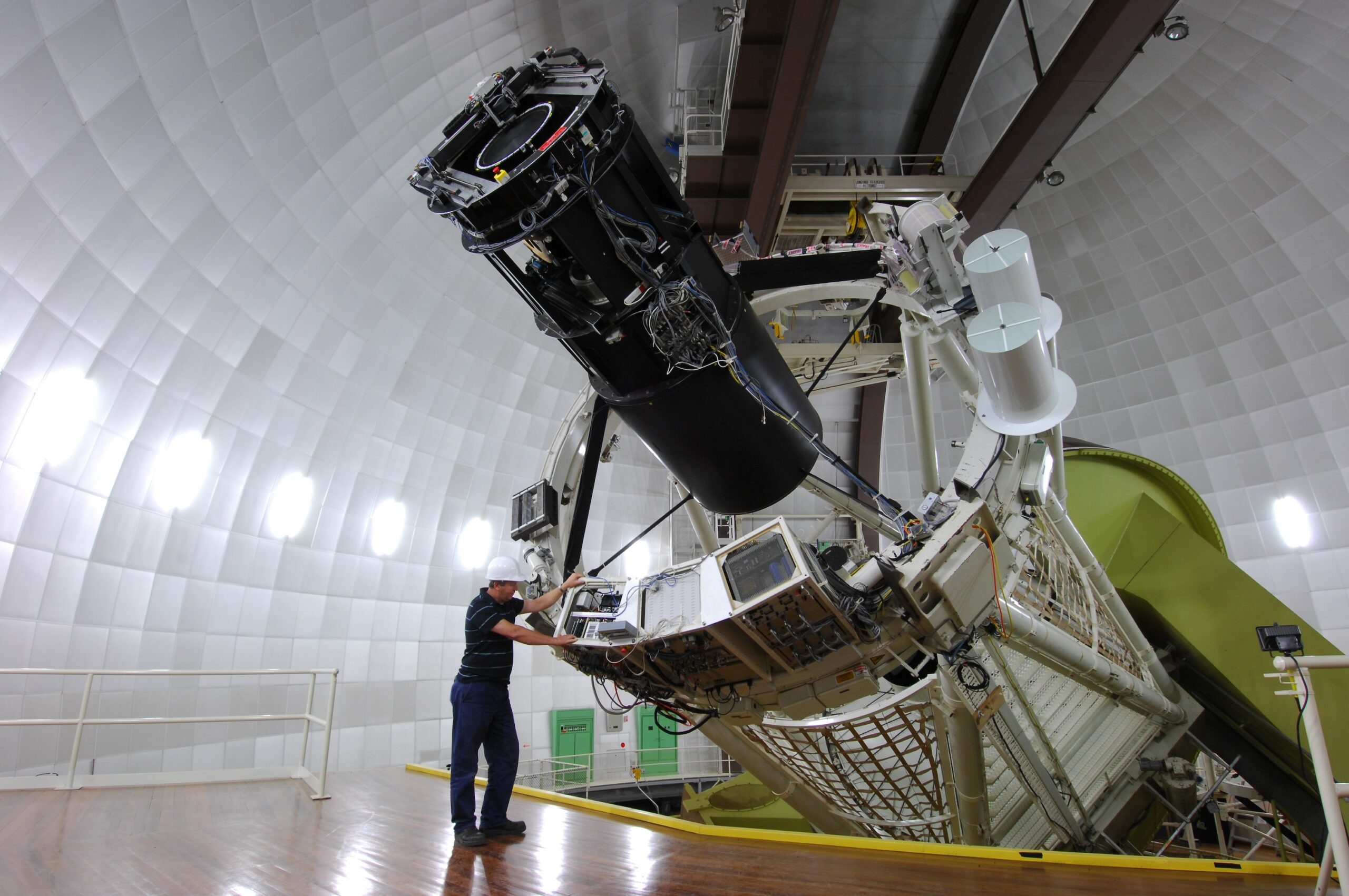
Geha and Wechsler named their project the SAGA (short for Satellites Around Galactic Analogs) Survey and began the herculean effort of cataloging dwarf galaxies in the distant universe one at a time, focusing on the ones that orbit galaxies known to be similar to the Milky Way. But the faint, diffuse nature of dwarf galaxies made identifying them — and distinguishing them from background galaxies — challenging, meticulous work. By 2017, the team had studied only eight Milky Way analogues. “We knew it was a little bit crazy,” says Geha. “The idea was this would be a long, slow process but that it was so worth the challenge of doing it.”
The decade-long effort has now mapped 101 Milky Way analogues in the distant universe, and 378 of their respective satellites. The team’s results suggest that while our galaxy is far from a cosmic anomaly, its satellite galaxies do sport distinct traits that make the Milky Way something of an outlier compared to its peers.
The quest for context
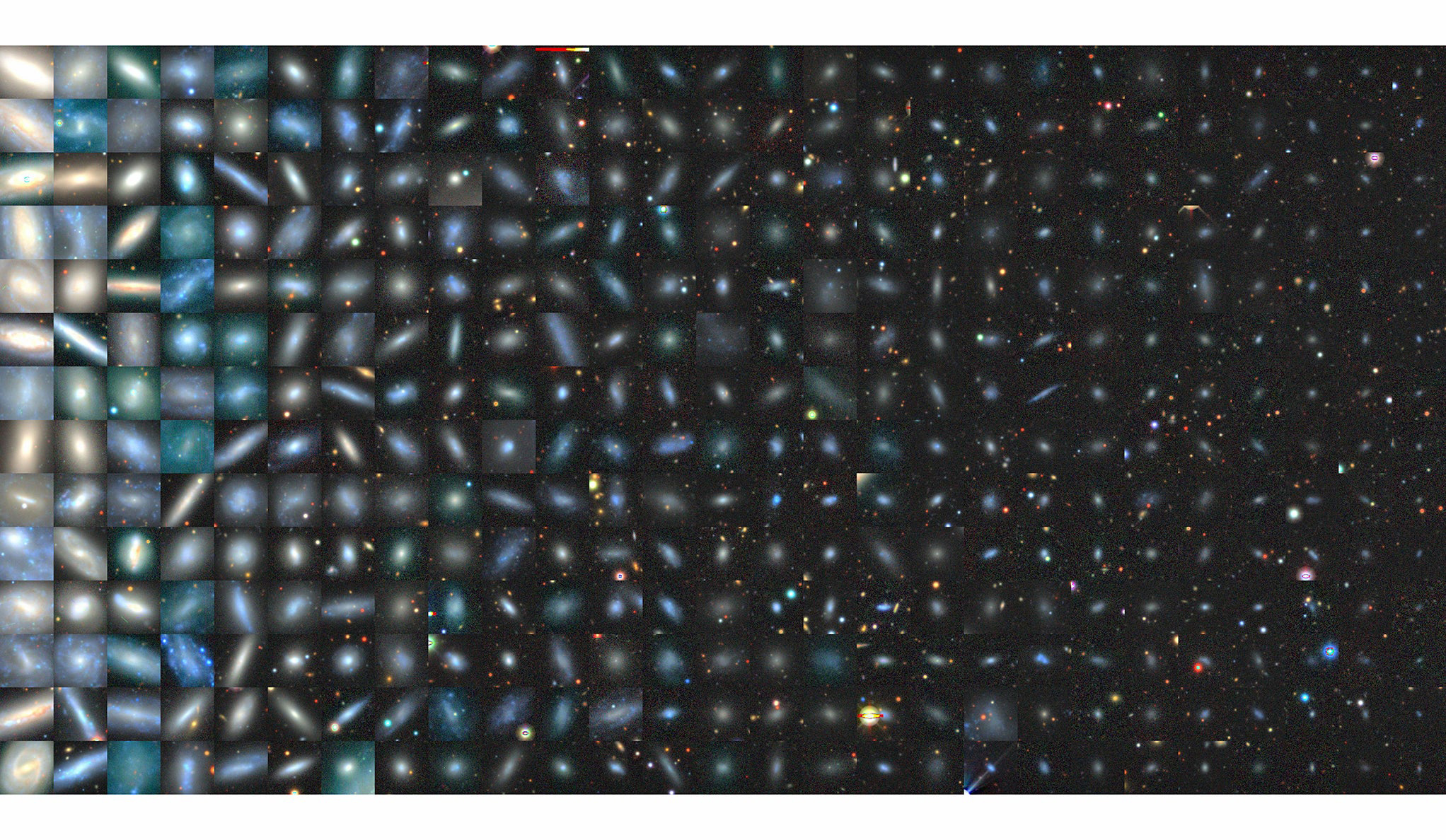
Most of what we know about tiny, faint satellite galaxies comes from studying those around the Milky Way. Our galaxy’s most famous examples are the Large Magellanic Cloud (LMC) and the Small Magellanic Cloud (SMC), which lie around 160,000 light-years and 200,000 light-years away, respectively, in the southern sky. Both of them contain numerous hotspots of star formation, like the Tarantula Nebula in the LMC. But the Milky Way also counts upward of 50 smaller dwarf galaxies as satellites, none of which are making any stars.
When scientists attempt to re-create Milky Way-like systems in computer simulations, even the best models struggle to perfectly replicate this swarm of dwarf galaxies orbiting our galaxy. This has led astronomers to worry whether the Milky Way — their primary benchmark — accurately captures the broader population of galaxies and their faint satellite galaxies.
“This has been a big challenge in the field for decades,” says Andrew Wetzel of University of California, Davis, who was not involved with SAGA. “If I have a small sample, is it representative of the population as a whole?” By cataloging hundreds of Milky Way-like systems beyond our cosmic neighborhood, SAGA has begun to provide that much-needed statistical context, he says.
A key part of this effort is that, over the past decade, the SAGA team has become increasingly efficient at the challenging task of distinguishing satellite galaxies from a vast backdrop of more distant galaxies, says Yao-Yuan Mao of the University of Utah, who simulates Milky Way-mass satellite systems for SAGA telescope observations. And that improvement has benefited from advances in technology. As one example, Mao says it took him about a year to run simulations of 45 Milky Way analogues in 2015, but the same task took only a week last year. “The computational power has increased dramatically,” he says.
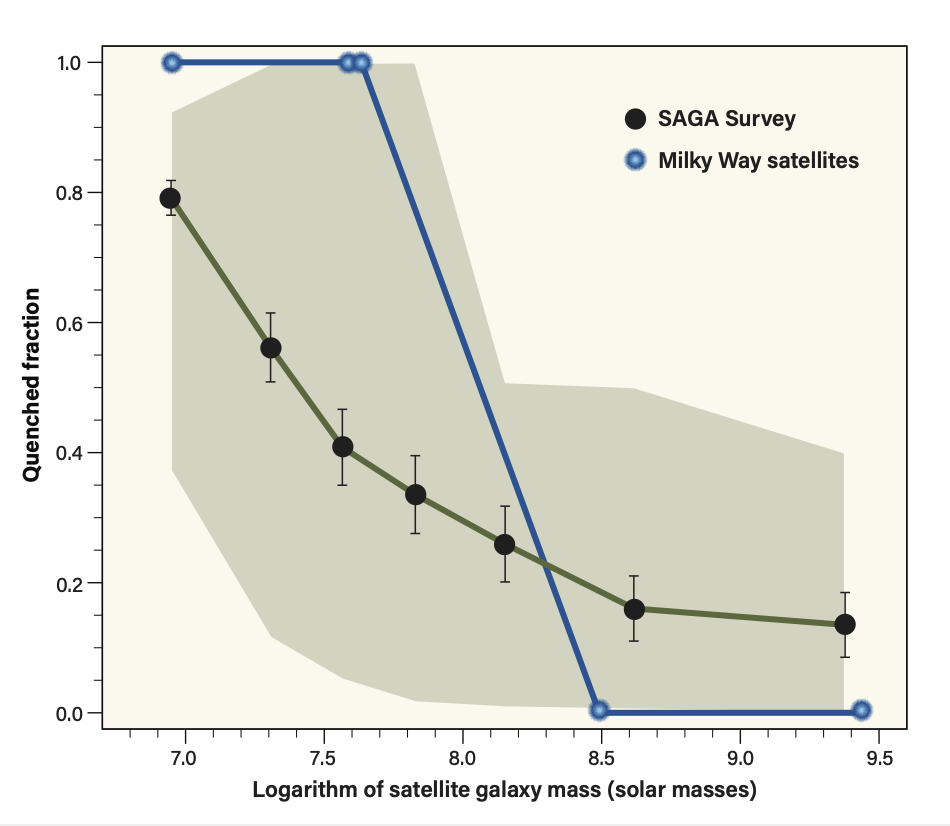
The survey’s first significant result, published in 2017, reported satellite galaxy populations around just eight Milky Way analogues. But already, the team was beginning to see that our galaxy and its collection of satellite galaxies was not typical of other galaxies in the sample. With the exception of the Magellanic Clouds, the Milky Way’s dwarf satellites have all stopped forming stars for a billion years or more — a state that astronomers call quenched. But of the 27 dwarf galaxies the SAGA team identified orbiting other galaxies, all but one were still actively forming stars.
By 2021, the SAGA collection of host galaxies had grown to 36, and the trend continued. In 2024, the team published their most recent results in The Astrophysical Journal, bringing their count to just over 100 host galaxies.
These results show that our galaxy’s mix of satellites is relatively uncommon. The Milky Way’s swarm of dead, quenched dwarf galaxies stands in stark contrast to satellites of Milky Way-like galaxies in the distant universe, most of which are still birthing new stars.
What’s more, the sample is now large enough for the team to analyze statistical trends — for instance, how a more massive satellite galaxy is more likely to be forming stars.
For theorists like Wetzel, this growing dataset is valuable for fine-tuning computer simulations in ways “we’d never be able to do” using just the Milky Way, he says. “I’ve been a big fan of what the SAGA team has done — it has been a tremendous contribution to the field.”
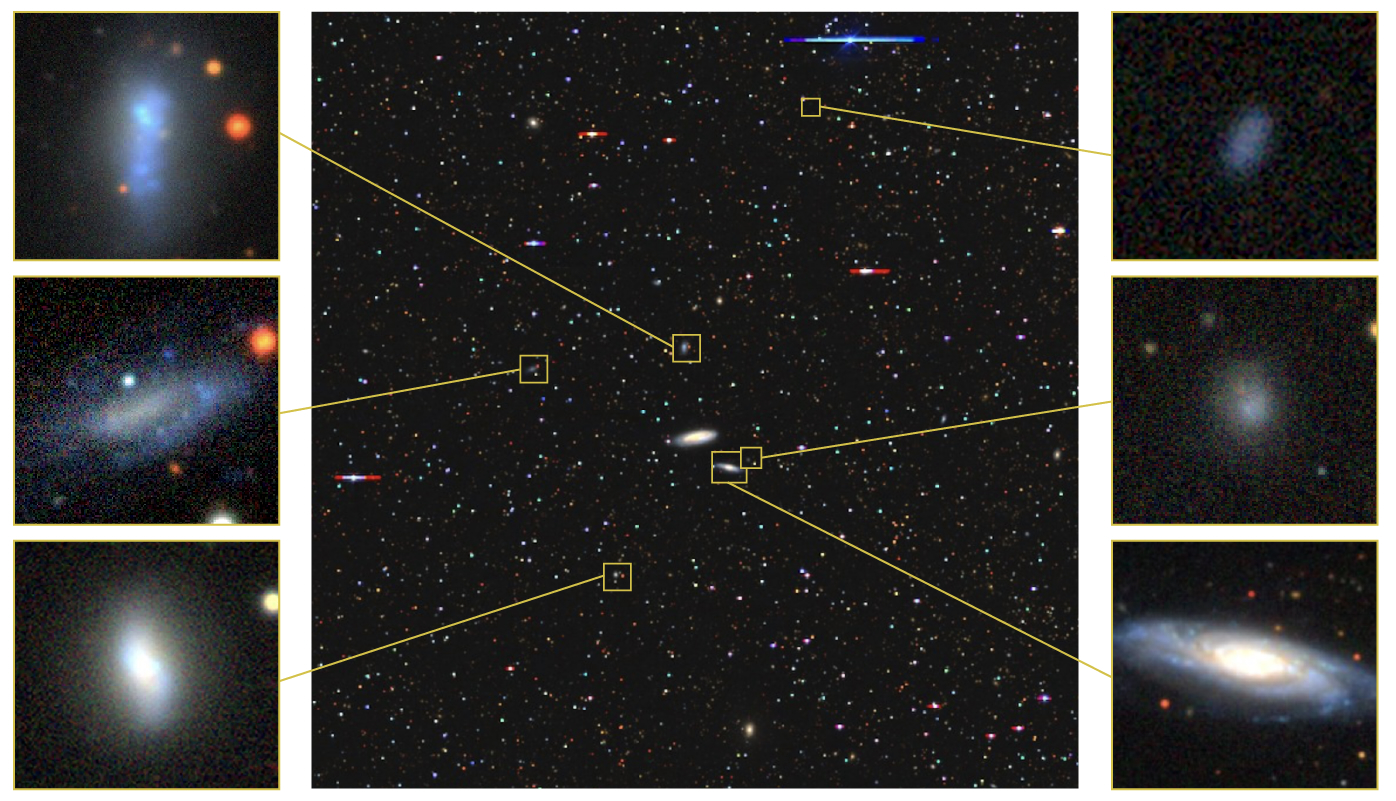
Recent acquisitions
So how can we explain the Milky Way’s flotilla of satellites? The likeliest explanation, says the SAGA team, is that while the quenched majority of satellite galaxies are older, the star-forming Magellanic Clouds are new arrivals to the Milky Way’s sphere of influence. Based on measurements of their orbits, astronomers are confident that these galaxies have only recently fallen into our galaxy’s halo — the vast cloud of invisible dark matter that encompasses our galaxy — perhaps in the last 1 billion years.
“They haven’t had a chance for their star formation to be shut down,” says Ethan Nadler of the University of California, San Diego, who co-authored recent SAGA papers.
Now that the Magellanic Clouds have fallen under the Milky Way’s sway, the larger host is eroding the ability of its satellites to form stars. Indeed, if your eyes could observe these satellite galaxies in radio wavelengths, you would see that gas — the raw material needed for forming stars — is gradually being stripped away by our galaxy’s immense gravitational pull. Models of this interaction suggest that in about 2 billion years, after just another orbit or so around the Milky Way, the Magellanic Clouds will have lost most, if not all, of their gas, essentially shutting down their ability to form new stars.
“It’s a very interesting result,” says astrophysicist James Bullock of the University of California, Irvine, who was not involved with SAGA. Rather than simply being dictated by the mass of the satellite galaxy, this finding suggests that the complex process of stripping a satellite’s gas and quenching star formation is more intricate and prolonged, he says. “Maybe that’s not surprising, but it’s good to know.”
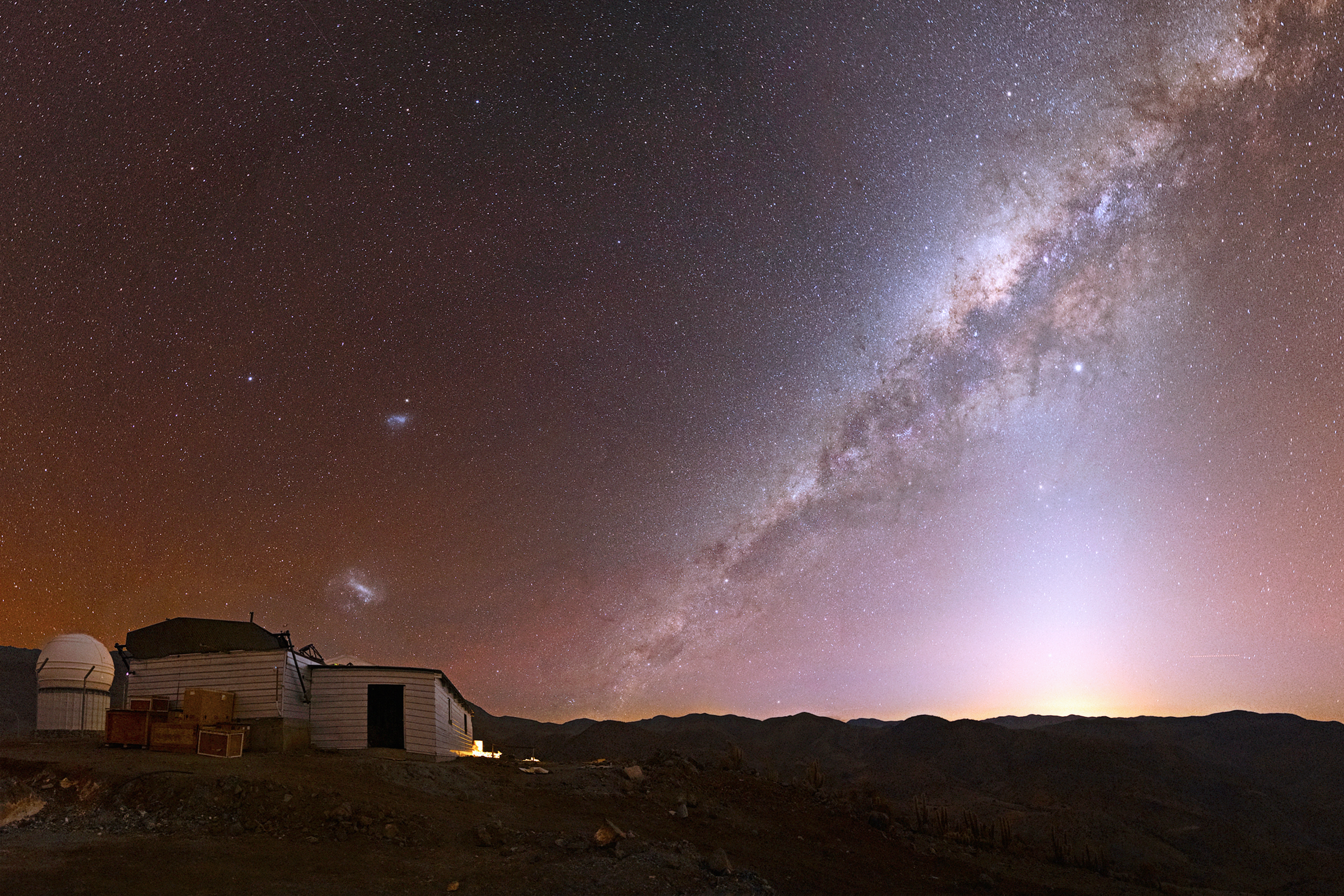
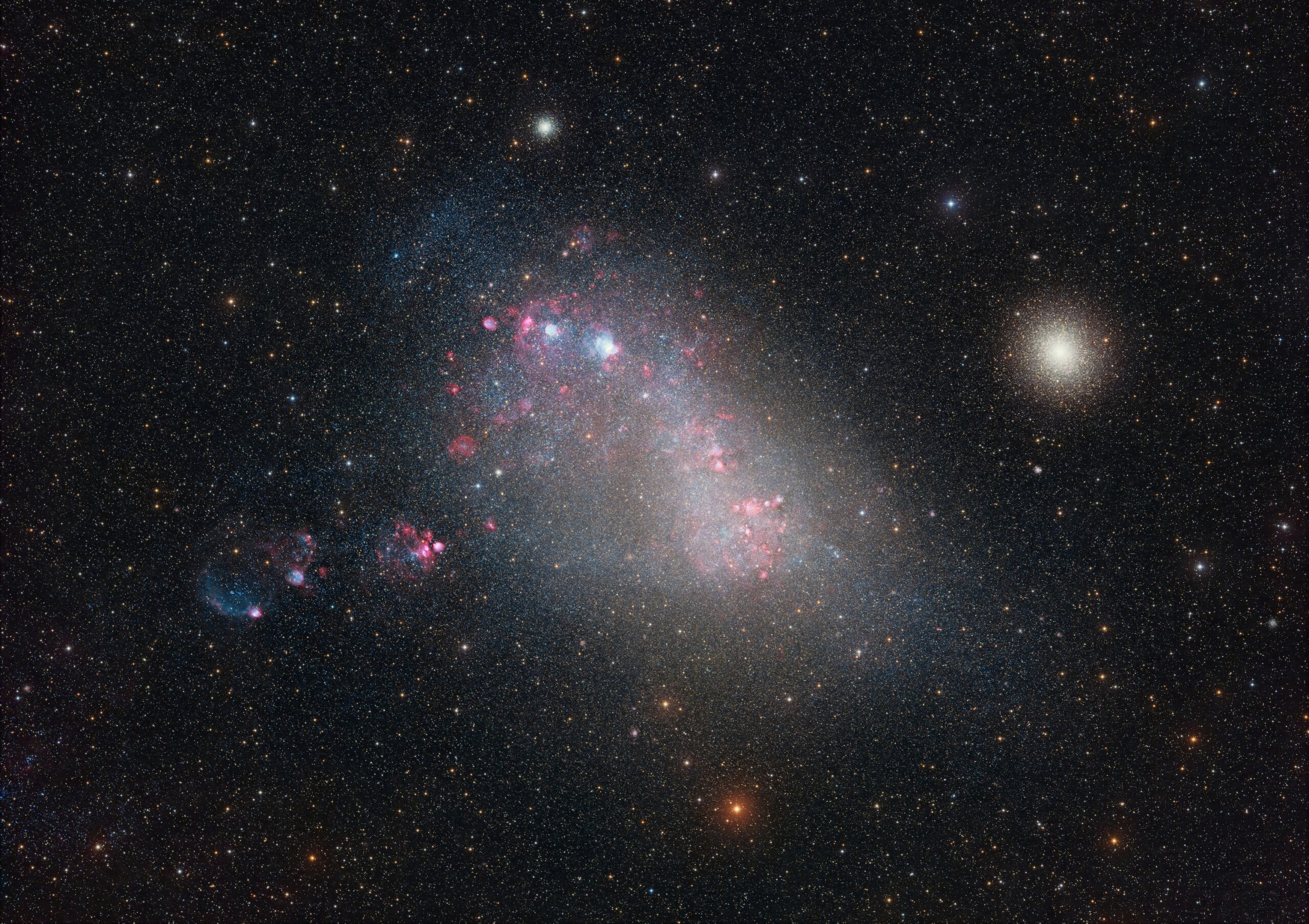
Possibly, the Milky Way is peculiar in that it acquired most of its satellites earlier in its history than similar galaxies. This early accretion gave the Milky Way more time to quench its satellites by stripping away their star-forming gas, leaving only a few later additions like the LMC and SMC, which have not yet had their star formation shut down. Meanwhile, the expelled star-forming gas eventually became part of the Milky Way’s halo, fueling it and helping it grow.
Another unique factor in the evolution of the Milky Way and its satellites could be that our galaxy has a close neighbor, the Andromeda Galaxy (M31). These two major galaxies could be influencing each other’s satellite systems in ways that set them apart from other host galaxies in the SAGA survey, says Nadler.
“I think we now genuinely understand some of the [Milky Way’s] quirks in ways that we just didn’t before,” says Geha. Mao adds that “it is not quite common that you learn something new and concrete about the universe in your lifetime — this is quite cool.”
Shining light on dark matter
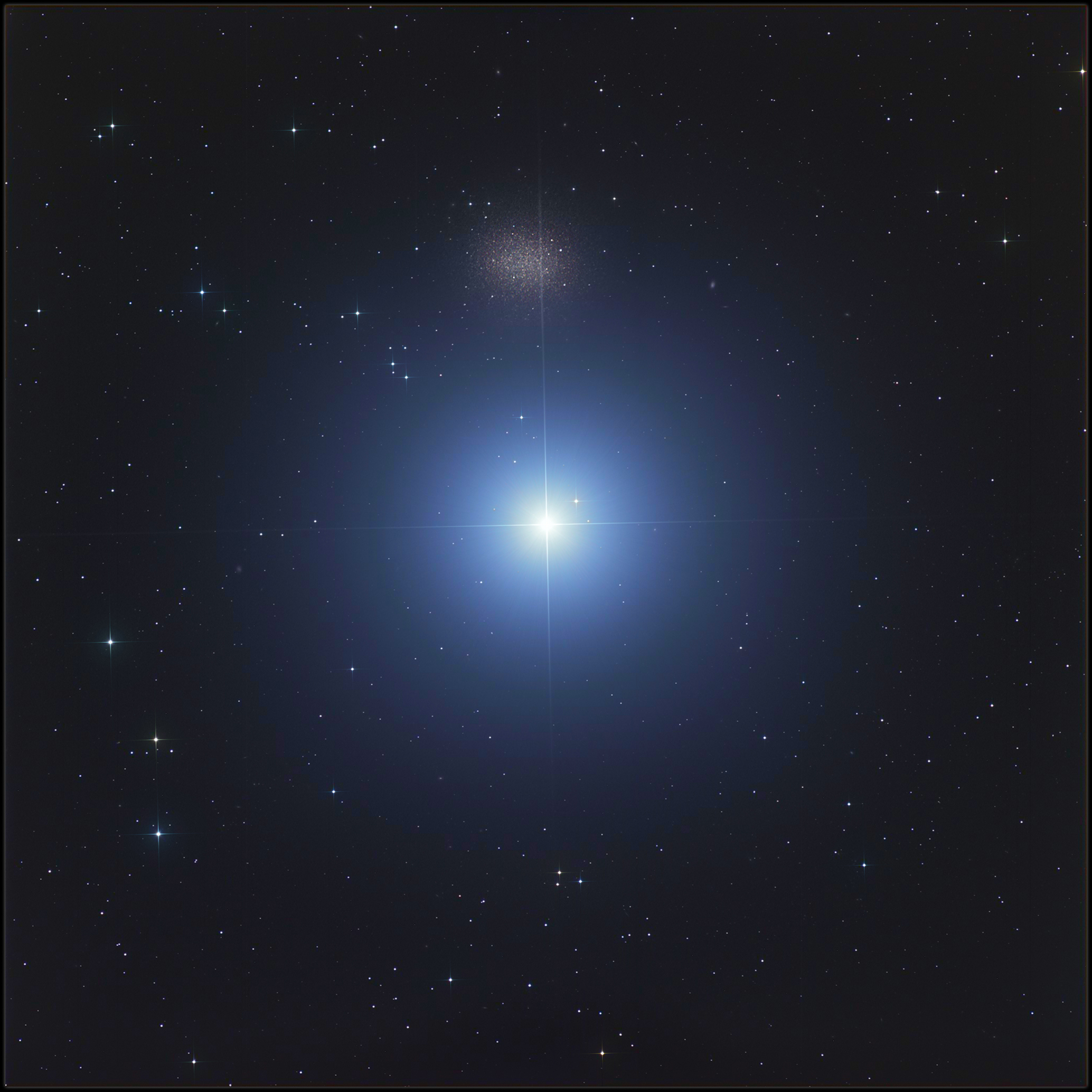
Low-mass satellite galaxies, like those being cataloged by SAGA, are not only markers of an individual host galaxy’s history. They may also hold great potential for probing one of the broadest open questions in cosmology — the elusive nature of dark matter. This substance makes up 80 percent of the universe’s mass, but its nature remains a mystery and decades of efforts to detect proposed dark-matter particles have been unsuccessful.
From observations of millions of galaxies and the expansion of the universe itself, scientists have complementary ways of indirectly measuring dark matter’s effects on large scales, primarily through its gravitational influence. “But we need the most help at smaller scales,” says cosmologist Dillon Brout at Boston University, who was not directly involved with SAGA.
SAGA’s approach to counting quenched satellite galaxies allows cosmologists to constrain the nature of dark matter and distinguish between competing models, as each is expected to leave specific signatures on the distribution of satellite galaxies.
For instance, in the cold dark matter model, the particles that make up dark matter travel at speeds much less than that of light. This type of theorized dark matter is predicted to clump together more easily, which would result in a greater number of satellite galaxies. Alternatively, warm dark matter travels faster and acts like a Mixmaster of sorts, smoothing out the early universe so that it forms fewer dark matter halos and thus fewer satellite galaxies.
Cosmologists are preparing to perform detailed tests on the particle nature of dark matter using the SAGA survey results, Brout says. “Ten or 20 years ago, something like this would have been unthinkable.”
The wealth of information provided by SAGA is also enabling cosmologists to probe key questions such as how long it takes for a satellite galaxy to cease forming stars, and how close it must be to the center of its host galaxy before this happens, adds Bullock.
Observations of any individual galaxy essentially capture a snapshot in time, so by measuring the distribution of satellites in Milky Way analogues at varying distances, cosmologists can begin to string together a timeline and test whether a single dark-matter model can explain satellite galaxies in both the early universe and the nearby universe.
“That’s a big story to tell and if we can tell it with one underlying model of dark matter, that’s a huge win,” says Brout.
The road ahead
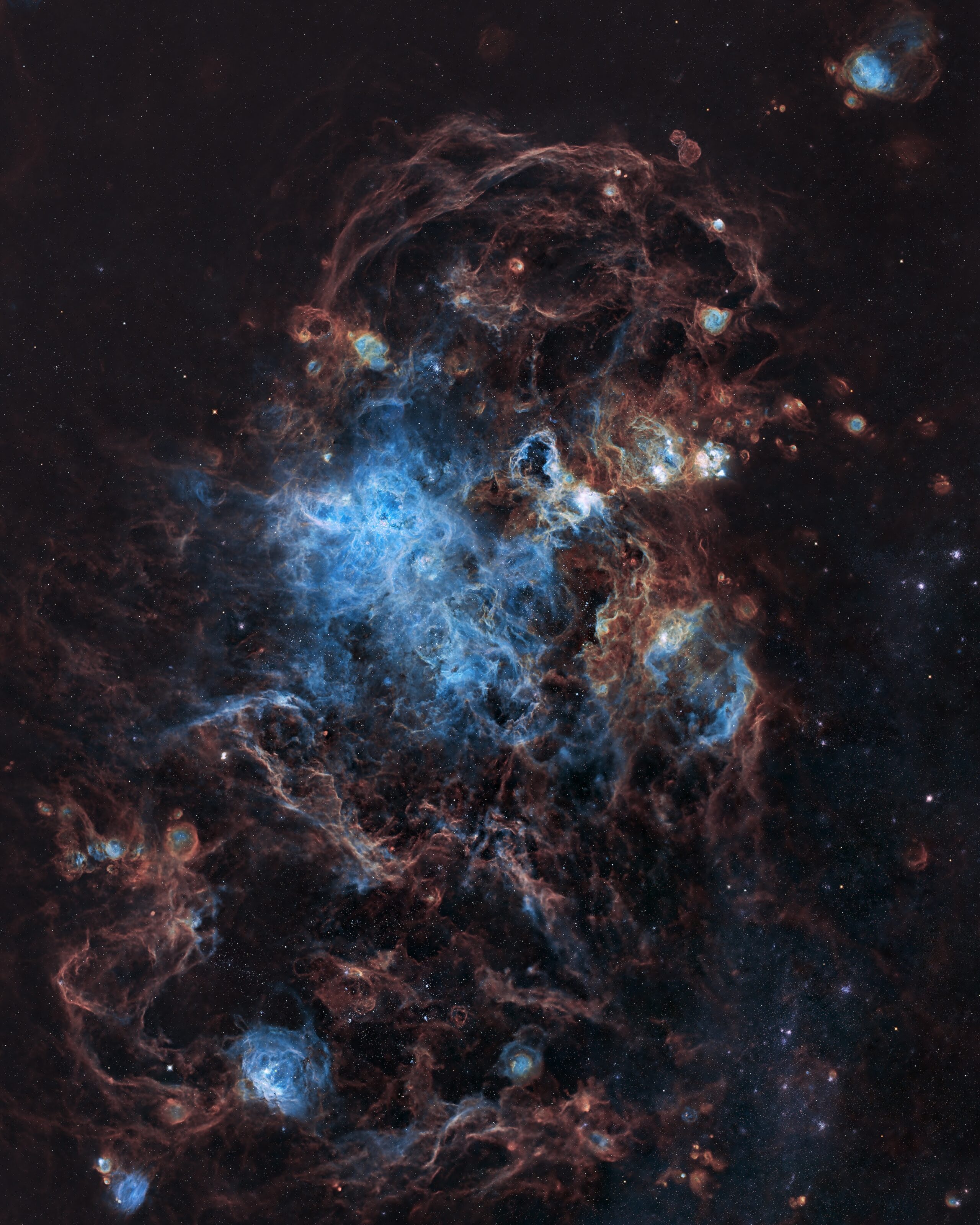
Notably, SAGA’s core team has remained intact over the past decade, even though two of their largest observing runs occurred during the challenging COVID-19 pandemic. “It’s a very small team given the scope of what we did,” says Geha, and a tight-knit one.
She recalls setting up six computer screens in one corner of her living room to continue gathering remote observations from the telescope the team was using in Australia, while her son occupied another corner for his kindergarten classes. The SAGA team’s weekly check-ins provided much-needed support during the tough times and “did a little more than just science,” she says.
For all the groundbreaking work the SAGA team members accomplished, they relied on relatively humble tools, using the venerable 6.5-meter MMT Observatory in Arizona and the 3.9-meter Anglo-Australian Telescope in New South Wales. The latter employs an old spectrograph that has been on the telescope for more than two decades.
“We were basically using the Honda Accords of instrumentation — nothing fancy,” says Geha. “The innovation was asking a different question than people had asked in the past.”
For now, the SAGA team has paused further observations and plans to focus on deepening their understanding of the systems already cataloged. At this point, doubling or tripling the number of Milky Way analogues — which could take a decade — doesn’t actually teach a whole lot more, says Geha. To be truly revolutionary, the number of analogues would need to increase by at least a factor of 10, a feat that will require next-generation technology.
That leap will arrive when the Vera C. Rubin Observatory begins operations later this year. Designed to image nearly the entire southern sky once every three nights, Rubin will catalog thousands of ultra-faint small satellites all the way to 10 billion light-years across the universe. And NASA’s upcoming Roman Space Telescope is expected to image stellar streams of satellite galaxies in further detail, allowing astronomers to infer how far along the quenching process each galaxy is. Together, the two efforts seem destined to publish a firehose of data that will revolutionize the study of galaxy evolution and dark matter.
Like the SAGA team, these works will help astronomers better appreciate the Milky Way — not only as our beloved home, but also as part of a much broader cosmic landscape.

